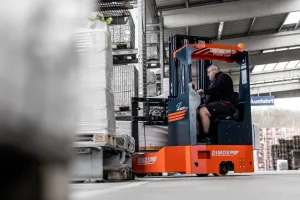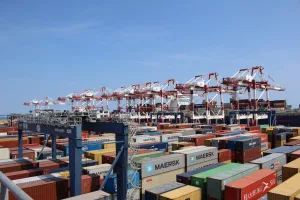MPs against Chelmsford logistics scheme
Two MPs have come out against an outline planning application for the development of a 1.29 million ft2 logistics scheme on land at Junction 17 of the A12 for near Chelmsford in Essex.

By Liza Helps Property Editor Logistics Matters
THE PROPOSED scheme, which totals 115-acres, is split between both the constituencies of Vicky Ford, MP for Chelmsford, and Sir John Whittingdale, MP for Maldon, who have sent a written representation to Chelmsford Council urging the planners to reject the application.
The scheme put forward by investment firm Greystoke Land, which specialises in securing planning permission for nationally significant developments in the UK, envisages up to nine warehouses on two plots of land ranging from mid box warehouses of 44,530 ft2 to 151,000 ft2 as well as three larger units up to 495,000 ft2 with eaves heights of 14 – 22m on green field Grade 3 agricultural land near Great Baddow. The scheme is expected to provide up to 1,600 jobs, significantly boost the local economy and provide much needed logistics space in the region.
The heavily landscaped scheme looks to safeguard and retain nature rich field boundaries and provide designated open space as well as enhancing existing vegetation with additional species rich hedging and native tree planting in order to boost biodiversity.
The MP’s representation highlights concerns of the local population regarding, transport issues, noise, harm to the environment as well as the scale and mass of the buildings proposed without there being any evidence that there is a demand for the space locally.
The letter went on to say: “The proposal to build a development of multiple massive warehouses in this location would be extremely detrimental to the environment, nature flooding, pollution as well as transport and infrastructure. It is very clear that the A12 at this junction cannot sustain development of this size.”
The site is not adopted in the Chelmsford Local Plan (CLP) but the proposers argue that the adopted CLP ‘does not adequately address the current needs of the logistics sector in Chelmsford’.
It has been noted that planners in the past have vastly underestimated demand for employment space in their regions – in particular logistics demand.
Savills Economics has developed a methodology called ‘suppressed demand’ that enables future demand to be calculated more accurately than existing methods under the National Planning Police Guidance (NPPG). The ‘suppressed demand’ methodology takes account of demand lost due to historic supply shortages as well as considers current day growth drivers such as increased online shopping.
Suppressed demand is where a business has the need to expand into new or larger premises, but the space isn’t available so they “make do” with their current facilities. Effectively the demand for land and property outstrips supply, creating suppressed demand.
At the end of 2022, Savills research noted that supressed demand in the Southeast will be at least 24 per cent higher than historic levels.
More recent research by small to mid box developer Potter Space in conjunction with Savills: BIG things in SMALL boxes, highlights the different levels of suppressed demand in the sub-100,000 ft2 sector across England. It calculated that the average suppressed demand stood at 38% meaning that there just isn’t enough land available for many businesses to continue their growth journeys.
In addition, it also means that the industry isn’t achieving as much as it should, with a calculated loss to the economy in Gross Value Added of £480 million per year.
The proposers cite the latest Planning Policy Guidance (PPG) note, which emphasises that policies for logistics should be formulated “separately from those relating to general employment land” because they often cut across local authority boundaries, with wide functional economic market areas and specific needs in terms of access to the strategic transport network, power capacity and labour supply.
Research by planning consultancy Lichfields in 2019 on the ‘last mile’ segment of logistics highlighted that planning is to some extent still catching up with this fast-moving sector and needs to better understand industry trends. Some 58% of authorities surveyed viewed the lack of an up-to-date local plan as a key barrier to meeting last mile needs. The PPG now points to a broad range of evidence being considered to help determine local logistics needs, including “changes in the local population and the housing stock as well as the local business base and infrastructure availability”.






